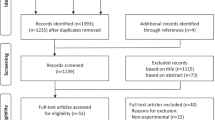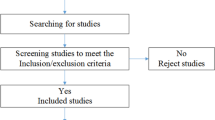Abstract
There is an inherent need for education systems and mental health models to begin incorporating principles of non-local science in their approach to education for a population to gain general intelligence. Contemporary education is lagging in comparison with scientific progress due to the adoption of concepts that are considered outdated in current scientific terms. While education systems have not moved away from physical theories the scientific community began departing from this scientific framework in the year 1900 with the dawn of the discovery of the Planck constant. The Bhagavata Purana provides a robust framework to encompass various spatial features of reality required to describe non-local sciences. This research attempts to assess the extent toward which the Bhagavata Purana can reconcile the various issues in contemporary scientific theory. Through review of Newton’s Principia Mathematica, Immanuel Kant’s Critique of Pure Reason, articles on Einstein’s Theory of Relativity, various academic papers regarding quantum physics as well as published articles on topics of space and time, various reference frames used for perceiving reality is compared to the Bhagavata Purana. The research concludes that the true nature of time according to the Bhagavata is ontological and relative to the reference frame used by the observer to perceive reality and stresses that the only way to perceive the true ontological state of Time is through a practice called devotional service. This research also recommends that there should be further research done in this area through the phenomenological research of time and space.



Similar content being viewed by others
Notes
Ontology according to contemporary philosophy is a branch of metaphysics that studies the science of being (https://plato.stanford.edu/entries/metaphysics/).
Space and Time refers to the absolute notion of reality and space–time refers to its relative nature.
This according to Max Weber was one of the negative effects of replacing traditions, values and emotions as motivators for behaviors in society with rational and calculated ones in society’s pursuit of organizing large scale populations.
Newton attempted to perfect a practical art called mechanics through the principles of accurate geometry. As stated in Newton’s principia all manual arts belong to practical mechanics and that which perfects this practical art is geometry (Newton, 1846, 73).
According to Kant, space does not represent the properties of objects neither does it represent relations between objects (Kant 1781, 78–80).
Albert Einstein suggested from his experiments on photoelectric effects that light waves acted like particles and that the amount of energy each particle of light could deliver can be measured (Crease & Goldhaber, 2014, 37).
Collapse of the wave function refers to the state when a wave collapses to become a particle (Crease & Goldhaber, 2014, 37).
In 1900 Max Planck discovered that radiation occurs with discrete energies that are quantified through a constant known as the Planck constant (https://plato.stanford.edu/entries/qm-copenhagen/).
Quantum Mechanics reveal that the universe is non-local. This means that there are influences that act with speeds that are faster than light in a vacuum suggesting that in classical physical terms that there are causes that act from outside our reality since Einstein’s theory of relativity assumes that the speed of light is constant throughout the universe.
Topology studies the properties of spaces that remain unchanged under deformations over time (http://mathematics.stanford.edu/research-areas/topology/).
Chaos is typically understood as a mathematical property of a dynamical system. A dynamical system is a deterministic mathematical model, where time can be either continuous or discrete. The context of this research refers to our universe as such a dynamical system that is nonlinear and regressive (returning to less developed state) in time (Markie 2017). A system that has such characteristics is called a chaotic nonlinear regressive system. Thermodynamics displays such characteristics when we observe gas disperse over time in a closed environment.
Introversion and Extraversion are human inclinations measured by the Myers Briggs Test Indicator.
It should be noted that the concept of atoms originated from natural philosophy denoting matter at a state that is no longer divisible (https://plato.stanford.edu/entries/atomism-ancient/). One should bear in mind that the original concept of atom was changed by contemporary science adopting Newton’s law but is now back to a concept resembling its original past with the advent of quantum physics.
The Higgs Field is a field that generates mass through its interaction with other particles. This is the field that gives fundamental mass to particles and is said to be universally existent (https://physics.aps.org/articles/v6/111).
Chaitanya Mahaprabhu refers to a Bengali saint from the sixteenth century of India who is considered an avatar within the Gaudiya Vaishnava institution. He revived the popularity of the Bhagavata Purana (Chatterjee 1983, 100–103). It is the assertion of the Chaitanya Caritamrta that in the context of this research the saint represents a direct dispersion in time and space that originates through the primary rules of causation from a timeless reality beyond space and time.
References
Barbour, J. B. (1982). Relational concepts of space and time. The British Journal for the Philosophy of Science, 33(3), 251–274.
Bernstein, R. R. (2007). Certain of Heisenberg’s Arts. Leonardo, 40(5), 483.
Bhaktivedanta Archives. (2003). The Complete Teachings of A.C. Bhaktivedanta Swami Prabhupada, The Bhaktivedanta Vedabase Los Angeles, Bhaktivedanta Book Trust. Retrieved February 16th, 2018, from http://www.vedabase.com/en
Biser, E. (1946). A generic theory of time. The Journal of Philosophy, 43(24), 664–669.
Bohm, D. (1962). Classical and non-classical concepts in the quantum theory. An Answer to Heisenberg’s Physics and Philosophy. The British Journal for the Philosophy of Science, 12(48), 265–280.
Bryant, E. F. (2003). Krishna the beautiful legend of god. Penguin Books Ltd.
Chatterjee, A. N. (1983). Sri Krishna Caitanya: A historical study on Gaudiya Vaishnavism. Associated Publishing Company.
Crease, R. P., & Goldhaber, A. S. (2014). The quantum moment: How Planck, Bohr, Einstein, and Heisenberg taught us to love uncertainty. W. W. Norton & Company.
Hammond, D., Herman, J., Pellegrino, J., et al. (2013). Criteria for high-quality assessment. Retrieved from Stanford Center for Opportunity Policy in Education website: https://edpolicy.stanford.edu/sites/default/files/publications/criteria-higher-quality-assessment_2.pdf
Dasa, S. N. (1999). Hindu encounter with modernity: Kedarnath Datta Bhaktivinoda, Vaisnava Theologian. Sanskrit Religions Institute.
Ditchburn, R. W., & Motz, H. (1937). On the uncertainty relations in the measurement of space–time. Proceedings of the Royal Irish Academy. Section a: Mathematical and Physical Sciences, 44, 45–76.
Guyer, P. (2006). Kant. Routledge.
Kant, I. (1781). The critique of pure reason. Philosophical Library.
Lenzen, V. F. (1949). Concepts and reality in quantum mechanics. Philosophy of Science, 16(4), 279–286.
Markie, P. (2017). Rationalism vs. empiricism. The Stanford Encyclopedia of Philosophy. Retrieved from https://plato.stanford.edu/archives/fall2017/entries/rationalism-empiricism/
McCrea, W. H. (1939). The evolution of theories of space-time and mechanics. Philosophy of Science, 6(2), 137–162.
McDonough, J. K. (2008). Leibniz’s two realms revisited. Nous, 42(4), 673–696.
McGrath, A., & Jebb, M. A. (2015). Long history, deep time: Deepening histories of place. ANU Press.
Miller, D. M. (2009). Qualities, properties, and laws in Newton’s induction. Philosophy of Science, 76(5), 1052–1063.
Narlicker, J. V. (1965). The direction of time. The British Journal for the Philosophy of Science, 15(60), 281–285.
Newton, S. I. (1846). Newton’s principia: The mathematical principles of natural philosophy (A. Motte, Trans.) New York, Daniel Adee. (Original work published in 1687)
Russel, R. J., Murphy, N., & Peacocke, A. R. (2000). Chaos and complexity: Scientific perspectives of divine action. Vatican Observatory and The Center for Theology and the Natural Sciences.
Acknowledgements
I would like to express my gratitude to my primary supervisor, Dr. Kenneth Valpey, who guided me throughout this research. I would also like to thank my parents Mr. and Mrs. Seelan, family and friends who have supported me throughout my research. My gratitude goes to the International Society of Krishna Consciousness (ISKCON) and their members for providing me with an insider view of the principles of knowledge within the Bhagavata Purana to which they have become the philosophical constant and standard bearer of its epistemic foundation. I wish to acknowledge the help provided by the administrative staff of Bhaktivedanta College, Belgium, especially Ms. Ana Knez who has been patient in her guidance throughout my final year project. I would also like to show my deep appreciation to the Nepalese people whom I have met in Nepal and Darjeeling, India for their kindness in hosting me in their remote villages throughout which I have gained invaluable insight in the pursuit of my phenomenological research of Time.
Funding
Not applicable.
Author information
Authors and Affiliations
Corresponding author
Ethics declarations
Conflict of interest
Not applicable.
Additional information
Publisher's Note
Springer Nature remains neutral with regard to jurisdictional claims in published maps and institutional affiliations.
Rights and permissions
Springer Nature or its licensor (e.g. a society or other partner) holds exclusive rights to this article under a publishing agreement with the author(s) or other rightsholder(s); author self-archiving of the accepted manuscript version of this article is solely governed by the terms of such publishing agreement and applicable law.
About this article
Cite this article
Sathyaseelan, A. An Assessment on the Feasibility of Describing a Revised Theory of Space and Time Based on the Bhagavata Purana. J. Indian Counc. Philos. Res. 39, 325–345 (2022). https://doi.org/10.1007/s40961-023-00293-1
Received:
Accepted:
Published:
Issue Date:
DOI: https://doi.org/10.1007/s40961-023-00293-1




